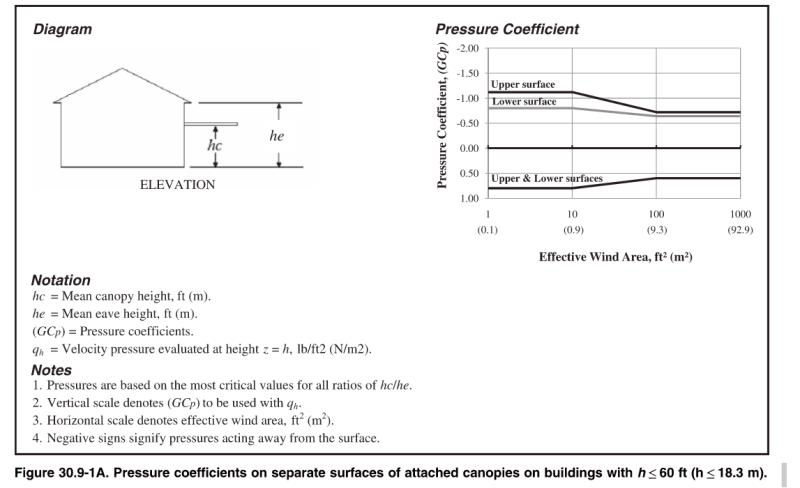I am looking at a large open structure, trying to determine C&C wind loads on the soffit. Roughly 100'x164' with a low side eave height of 35.5' and a roof slope of 1/4":12". It is a PEMB structure with a lower soffit approximately 5' below the upper roof surface. There are separate purlin systems supporting the roof and the soffit. Designing under ASCE 7-10.
Figure 30.8-1 gives Cn values for positive and negative pressures, noting that the Cn values represent the contributions from the top and bottom surfaces. The commentary (p. 572) states that, for surfaces separated structurally from the top roof surfaces, the pressure coefficients from the top and bottom surfaces may be separated (or conservatively each surface could be designed using the full Cn values.)
My question is, is there anywhere to look for guidance on how to separate out the top and bottom coefficients? 7-22 now has a section on loads on the bottom surface of an elevated structure, but my prelim calcs indicated these loads are higher than the "conservative" combined loads from Fig. 30.8-1. (I still need check and make sure I am apples to apples between the two codes.)
Figure 30.8-1 gives Cn values for positive and negative pressures, noting that the Cn values represent the contributions from the top and bottom surfaces. The commentary (p. 572) states that, for surfaces separated structurally from the top roof surfaces, the pressure coefficients from the top and bottom surfaces may be separated (or conservatively each surface could be designed using the full Cn values.)
My question is, is there anywhere to look for guidance on how to separate out the top and bottom coefficients? 7-22 now has a section on loads on the bottom surface of an elevated structure, but my prelim calcs indicated these loads are higher than the "conservative" combined loads from Fig. 30.8-1. (I still need check and make sure I am apples to apples between the two codes.)

